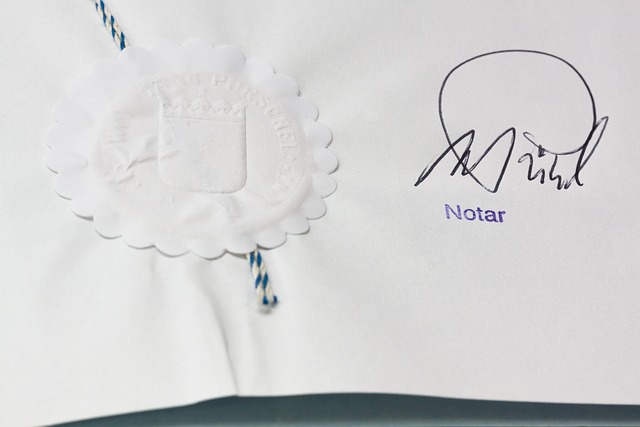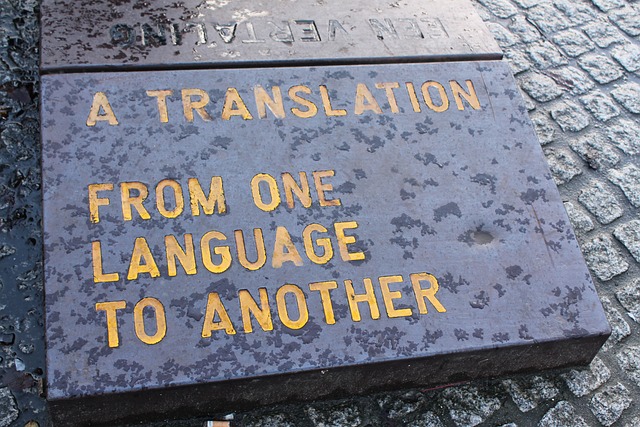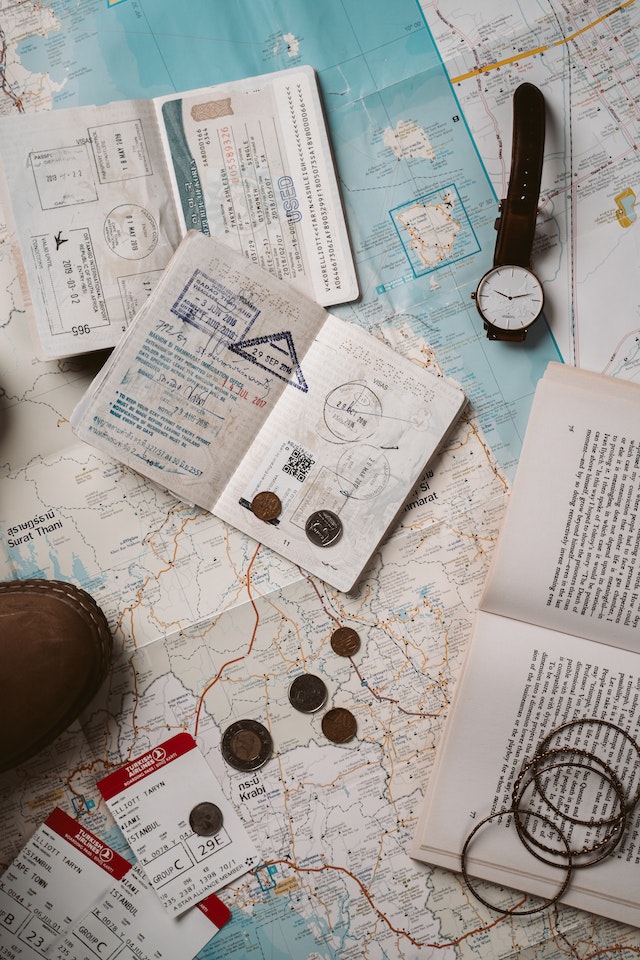Rapid Translate Team
Document translation is highly necessary for those traveling abroad or sending applications for work, study, or other purposes. You may wonder which version you need as different versions exist, including a standard, certified, and notarized document translation. Well, it depends on the nature of the document and its use.
Official or administrative documents usually require a notarized translation. However, other agencies may specifically request it. It’s mostly confused with certified documents, even though both are different. So what are the differences, and how can one get a notarization? This article answers these and more.

Table of Contents
Analyzing Document Notarization and Certification
A notarized translation is a translation with a signature from a notary confirming the translator’s qualifications. Most people wrongly assume that notarized and certified translations are the same. However, they’re not.
The core difference between both is that certified translations have signed statements that guarantee their quality and the translator’s qualifications. The purpose of certification is to prove the accuracy of a translation. Both certified and uncertified translators can issue certifications.
Notarized translations carry a notary’s signature as a form of legal approval. Therefore, notarized certificates or documents have to pass through two processes. The first is a written rendition of text from a source to a target language by a professional translator.
Some jobs require a certified translator, but this isn’t always compulsory. Any translator can take their translations to a notary for signing. But first, the translator must swear an oath and sign an affidavit. This process attests to the correctness of the translation, as the notary might not understand the language pair.
So, notarization is a higher level of document validity that confirms signatures and signatories as a means of fraud prevention.

Who Is a Notary Public?
A notary public is a person the government appoints to scrutinize and approve document legalities. In the U.S., the office of the Secretary of State is responsible for appointing notaries.
The notary is an impartial witness who confirms that the translator’s identity is genuine to control fraud. It’s the job of a notary to fish out anyone who forges a signature on a translated document. Aside from ascertaining the genuity of signatories, a notary ensures that the signing is not a product of coercion.
A notary public may be a lawyer or someone with experience in the legal industry. People outside the legal industry, such as administrative officers or public servants, can be notaries.

How To Become a Notary
Notaries oversee the translation of legal documents, amongst other documents, and ascertain that signatories understand the document’s content. Becoming a notary can be a preliminary step to developing your career or enhancing your curriculum vitae.
So, if you want to become a notary, there are due processes for you to follow. First, you must research your state’s requirements as they vary throughout the USA. Next, you must get, fill out, and submit an application form after paying a fee.
Depending on your state, you may have to attend physical or online training and sit for an exam. You may also have to do a biometric fingerprint scan and give details for a background check. After passing the above process, the state will give you your commission certificate/ notary certification within six weeks.
If a swearing-in aligns with your state’s criteria, you must undergo the process, file your certificate, and register your signature. Failure to do this attracts a revolution of your commission certificate. But if you stick to the rules, you can purchase the tools needed to notarize translated documents.

6 Characteristics of a Notarized Document Translation
You may wonder what qualifies a notarized translation. Is it just the notary’s signature, or is there more to it? Some distinguishing features are present in notarized documents that set them apart. These features concordantly affirm the legality of the translation.
Below are the characteristics of a notarized translation:
- A stamp or official seal from the notary.
- The notary’s signature.
- Notarization date.
- The notary’s commission certificate details.
- Identification details of the signatory.
- A jurat or an acknowledgment
A notary’s stamp contains their name alongside other details that must appear in the translation. The notary’s signature is usually close to the seal. However, the notary has to verify the translator’s identity before signing. The notary then writes the date of the event on the translation.
Sometimes, a notarized document may include the notary’s commission number, jurisdiction, and certificate expiration date. Another important piece of information in a notarized accurate translation is an official identity detail of the signatory. So, if you want to confirm that a document is truly notarized, check for these features. If they’re there, you’re good to go!

When To Procure a Notarized Translation
A notarized translated document is not always necessary. Sometimes, a standard, certified, or legal translation is acceptable, depending on the institution. But usually, government bodies, courts, and financial and educational institutions demand notarized transliterations for official certificates and documents.
You may need to notarize translated documents like educational transcripts, degree or diploma certificates, and marriage and birth certificates. Other original documents requiring notarization include U.S. visa and passport translations, curriculum vitae, job contracts, and administrative documents.
Notary services can also authenticate foreign job applications. Notarization gives documents extra credibility and facilitates acceptance, adding a nice flair to your document. However, you must confirm with the recipient if notarization is necessary for your application.
Notarization might be insufficient when submitting your applications or certificates to a country other than the USA. Specifically, countries that participated in The Hague Convention Treaty.
So, you’ll need an apostille from the office responsible for commissioning the notary. Don’t worry; the criteria for obtaining an apostille isn’t difficult. So, with an apostille, your documents will have international recognition.

How to Notarize a Translated Document
To notarize translated documents, the translator must meet a notary. Even if the translator is a notary public, it’s impossible to function in both capacities simultaneously. So, the individual will have to choose a role to play and sit the other out.
So, after a professional translator renders a document in the target language, the individual must contact a notary public. The next step is to agree on time to meet for the notarization.
The translator must present the original and translated documents on the appointed day. If the notary understands both languages, they’ll compare the documents to check for correctness. If not found wanting, the notary can verify the translator’s identity using a formal means of identification.
The translator and other signatories (if any) can sign the document before the notary public. The notary public can then guide the signatories through taking an oath or signing an affidavit’s jurat if necessary.
The notary can officially stamp the document after ensuring that the signing is duress-free, without foul play or fraud. After stamping, the notary signs the original and translated documents, indicates the date, and adds all necessary commission certificate information.
For record keeping, the notary may write down a description of the physical notarization process alongside important details.
Finally, the notary will return the documents to the translator. The translator then scrutinizes delivery methods and chooses the best way to send the documents to their owner. Now, that’s how to notarize a translated document.

Can I Translate and Notarize a Document Online?
Yes, you can translate and notarize documents online. But this depends on your jurisdiction. Notarization laws vary within states, so while some states permit online authentication, some emphasize physical services.
Here are two tips for pursuing an online translation and notarization.
1. Confirm Your State’s Laws and Find a Translator and Notary
Start by researching the notarization laws in your jurisdiction. If the state permits the act, you can proceed to find an online translator and a notary. Contacting them on freelance websites is possible, but online translation agencies are better for quality assurance.
Agencies also offer umbrella services, so you can get a translator and notary at a go. Whichever you choose, verify their reputation, credibility, and the quality of their services.
When the translation is complete, the translator may have to create an account with their personal information or identity documents. They can follow up by scanning, uploading, or emailing the document. But first, the translator must cross-check the translation to ensure it satisfies all requirements.
2. Get Your Translator To Meet With the Notary and Finalize the Job
The next step is to set up a video meeting where the notary will verify the translator’s identity again. The notary may ask questions or ask to see certain certificates. After the verification phase, the translator can proceed to sign.
Finally, the notary will affix their stamp, signature, and all other requirements electronically. The notary public now sends the notarized document to the translator and records the meeting digitally or in a journal.
Now that you’ve learned how to translate and notarize a document online, you must note agencies’ procedures differ. But generally, the described procedure is what you should expect.
So, if you want an online notarization, you can try RapidTranslate, one of the best online agencies. RapidTranslate hires qualified translators from all jurisdictions and can connect you with trustworthy notaries.
With this agency, you don’t have to wait extremely long periods to get a notarized document translation. This online service confidently handles translations and notarizations for those aspiring to study or engage in business abroad. So, place your order now and get your translations notarized and ready for submission!




